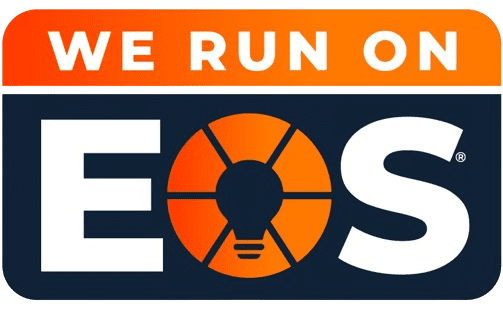The key to a thriving team lies in understanding and empowering your employees’ unique strengths. One size certainly doesn’t fit all, and recognizing individual personality traits is crucial for fostering career growth and maximizing employee potential.
Motivation versus Empowerment
It’s important not to confuse motivation with empowerment. Although they are related, they have distinct meanings and implications.
Motivation refers to the internal or external factors that generate an employee’s interest in and commitment to a task, job, or pursuit of a goal.
Empowerment refers to the process of giving employees the authority, confidence, and capabilities to make decisions and take actions autonomously.
Motivation is about what drives individuals to act, while empowerment is about equipping individuals with the tools and authority to act independently so that they can be confident and innovative in their roles within your organization.
How can you leverage personality traits to empower your workforce?
There are certain traits and preferences that, when combined, make it either easy or more challenging for employees to feel empowered in their work. Let’s delve into some key behavioral trait combinations and explore strategies to equip them to take ownership of their careers.
Combination 1. Ambitious and Independent Types
These people have a strong internal goal drive and an ability to make decisions on their own and think outside the box for solutions. They like to compete and win, and they generally don’t wait to be told to “go for it;” they just go for it!
People with innate ambition and independence are often self-empowered. They mostly need guidelines and space to make things happen.
Empowerment Strategies:
- Offer continued growth and opportunities to earn incentives like bonuses or promotions based on their own efforts. They’ll be energized by the opportunity to push themselves. If promotions aren’t readily available…
- Assign them leadership roles within teams. Give them the chance to take ownership of an area and guide others towards success.
- Offer leeway within essential guidelines. Explain the policies and processes that always need to be followed and let them know where they have free rein. Offer more freedom to innovate as they prove themselves.
Combination 2. Ambitious and Structured Types
These people have a drive to win combined with a preference for clear guidelines. They want to compete and prove themselves, but they like having a clear plan to follow and often seek input from leadership; this combination can lead to some internal conflict which may sometimes hold them back.
Addressing the need for structure from the start can help resolve the conflict employees with this mix of traits feel. It allows the internal drive to take over.
Empowerment Strategies:
- Provide in-depth training and clear, step-by-step procedures to follow. Knowing what is expected and how to meet expectations increases these employees’ confidence.
- Offer new challenges once certain goals have been achieved and skills have been mastered. Couple the challenges with additional training.
- Let them know you trust them and encourage them to trust their own judgment. Make sure they feel supported in their decisions and actions.
- Provide specific, diplomatic performance feedback at regular intervals. Since they are their own harshest critics, they can become easily discouraged by perceived criticism. Still, they like to know how they are measuring up against expectations. Frame any corrective input as an opportunity to learn.
Combination 3: Supportive and Independent Types
People who are both supportive and independent are natural helpers and team players who can come up with creative ways to contribute to shared goals. They would prefer to receive directions over taking the lead in most situations, but they want room within those directions to use their own methods.
Employees with this combination of traits want to know that they are helping their team, and they want to feel appreciated for their efforts. They especially like knowing how their unique approach contributed to the success of a goal or initiative.
Empowerment Strategies:
- Involve them in brainstorming sessions. Having the chance to provide input on how to approach a goal or initiative helps build confidence for acting toward it.
- Add responsibilities gradually. Being able to ramp up to new duties helps these tasks feel less risky and more approachable.
- Be clear about when action is expected. When these employees aren’t sure whether they are expected to be proactive, they tend to decide for themselves. If the action feels unsafe or in some way out of their grasp, they may use ambiguity as an excuse for inaction.
- Applaud their contributions to team success. Using public praise for socially oriented employees or a one-on-one or written thank you for more reserved people, let them know how their efforts helped their team.
Combination 4. Supportive and Structured Types
These individuals are collaborative helpers who take direction willingly and rely on processes to guide them. Their inner drive is to do “the right thing,” and empowerment comes from knowing what that is and feeling secure in doing it.
People with this combination of traits tend to need the most support to build a sense of empowerment. Being natural team players who follow procedures means that they have no strong inner drive to take the lead or do things their own way. But it also means that when they are empowered, they are strong advocates for their team and your organization and strong role models for quality.
Empowerment Strategies:
- Preparation is key. For these employees, confidence comes with being thoroughly prepared with step-by-step processes and regular reassurance that they are meeting expectations and helping their team.
- Let them know when it’s okay (or even expected) to make mistakes. An error, even a small one, can feel like a double-whammy to these employees. First, it bothers them that the error happened at all, and then, they worry about the consequences. Have they hurt the team? Will it result in conflict? Are they going to get fired? Give them training time to make all the missteps they need, and remind them that 1) everybody makes mistakes, and 2) that’s how we learn.
- Let them be subject matter experts. Being able to help by answering questions, sharing experience, and providing guidance builds confidence quickly for these employees. They are emboldened by knowing they can leverage their innate helpfulness and preparation to support others.
- Highlight the ways their initiative helps the organization. Having clear examples of the effects of their efforts on the team makes them feel empowered to repeat those actions and reach further.
Beyond the Basics: Building a Strengths-Based Culture
Here are some additional tips for building a strengths-based culture:
- Conduct personality assessments: A behavioral assessment, like the Omnia Behavioral Assessment can provide valuable insights into employee preferences, strengths and challenge areas.
- Encourage self-awareness: Help employees understand their own strengths and weaknesses. The Omnia Development report is designed to do just that.
- Embrace diversity: A blend of personalities creates a more dynamic and innovative team environment.
- Focus on growth, not just strengths: Help employees grow beyond their current strengths by offering development opportunities.
By leveraging personality traits and fostering a strengths-based culture, you can create a work environment where every employee feels empowered, valued, and equipped to reach their full potential. This translates to a more engaged, productive, and ultimately, more successful workforce.
For more information on using personality insights from the Omnia Behavioral Assessment to empower your employees, reach out to us today.























